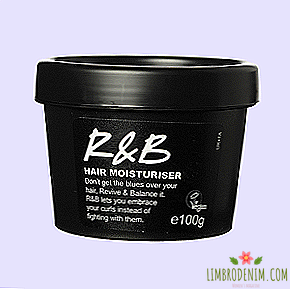Meat or pasta: Is vegetarian ecology harmless?
Around vegetarianism and more categorical veganismcontroversy continues: while some deliberately refuse meat or animal products for ethical reasons, others condemn this choice. We have already tried to figure out whether it is worth refusing meat for health reasons, and now we decided to study the question from the other side: is it more useful for nature to refuse meat or not, to buy leather things instead of clothes made of synthetic materials or vice versa?

Choosing dinner, we rarely think about how it affects the planet - but it would be worth it. We all understand that the rejection of meat, fish and poultry is more humane with respect to animals - but the impact of our diet on the environment is more complicated. Livestock does deal a stronger blow to nature than agriculture. According to the UN, this is the cause of the emission of 14.5% of all greenhouse gases into the atmosphere - more than emissions of all cars, trains, ships and airplanes combined.
The same applies to the water footprint (the amount of water spent on the production of goods or the provision of services): researcher Argen Hoekstra notes that the water footprint of any animal products is always higher than the water footprint of plant products. The basis of the water footprint is not water, which is spent on the production of meat, sausages and milk, but liquid, which is used to grow feed for livestock. About 40% of all cereals grown in the world go for food - it’s easy to imagine how many people could be fed with them.
Of course, to say that only the meat industry harms the environment is impossible. Deforestation for agriculture also influences the climate (including because trees absorb carbon dioxide), and rice fields, for example, remain a source of large methane emissions, which also change the climate. Because of agriculture, animals also die. Plowing the fields and harvesting destroy many rodents, snakes, lizards and other small animals - they just fall under the harvesters. In addition, mice are killed and poisoned in the granaries. There is an opinion that from this point of view it would be more ethical to eat insects, because death brings them less suffering. Along the way, ideologists of a greener lifestyle are trying to improve the status quo: for example, they are developing vegan agriculture, which affects animals less.
Many researchers believe that it is best to abandon red meat: 65% of such emissions in cattle breeding are associated with intestinal fermentation of cows
According to Benjamin Holton, a scientist at the University of California, who studies how the food industry affects the environment in terms of the carbon footprint, a vegetarian diet is a half measure. The safest choice for nature is vegans, because it generally excludes animal products - including eggs and dairy products. At the same time, there is no gap between veganism and vegetarianism, vegetarianism is close to the Mediterranean diet - it is her experts who recommend those who are not ready for the environment to completely give up meat.
"Our research shows that if everyone aspires to a Mediterranean diet (rich in nuts and legumes, meaning a lot of fish, chicken about once a week, red meat once a month), this will be equivalent to abandoning a billion cars that pollute our planet" - notes Holton. A massive transition to a Mediterranean diet would help reduce global warming by 15% by 2050. Those who are not ready to radically change the menu are advised to at least reduce portions of meat - or, for example, once a week do not eat it at all. In addition, it is important where the products were made: the use of local meat and vegetables causes nature less damage than transportation.
However, in the transition to vegetarianism or the Mediterranean diet, there can also be pitfalls. If, for example, replacing chicken in the diet with cheese, the carbon footprint, on the contrary, will grow - because raising cows affects the environment more strongly than breeding chickens. Catching fish - and this is an important part of the Mediterranean diet - also raises ethical questions: now a huge proportion is harvested from fish farms - and in the pursuit of a lower price, many producers sacrifice conditions for keeping fish. In addition, the breeding of certain fish species requires large resources - for example, in order to get a kilogram of salmon, you need three to five kilograms of other fish.
Meat products also affect the environment in different ways - and a lot depends on what criteria we take to evaluate it. For example, referring to emissions of greenhouse gases into the atmosphere, many researchers believe that it is best to abandon red meat: 65% of such emissions in cattle breeding are associated with the intestinal fermentation of cows, sheep and goats (that is, with belching and gases). Emissions to the atmosphere from the production of pork and breeding of birds are much less - they make up only 10% of all emissions in animal husbandry.

In terms of the volume of water required for the production of a product, beef also comes first: lamb and goat meat require almost two times, and pork is almost three times less. Interestingly, the water footprint of the production of nuts is more than the trace of the production of almost all types of meat, except the already mentioned beef. Of course, mankind eats nuts much less than meat - but this can change if we all switch to the appropriate diet.
From the point of view of ethics, many experts advise not to meat, but chicken and eggs, in the first place. Philosopher Will Macaskill, author of the book "Doing Good Better" about ethical consumption and lifestyle, says that chickens are kept in the most difficult conditions - and you can feed far more people with one cow’s meat than with one chicken. Finally, from the point of view of using the resources of the planet, a diverse diet is more profitable than a general transition to veganism: territories with different types of soil are used for livestock and plant growing, and they are not always interchangeable. For example, in Sub-Saharan Africa there are many dry lands where only livestock breeding is possible.
Another big animal rights dispute is built around clothes. For vegetarians, vegans and those who are categorically opposed to killing animals, the question of whether to buy leather items is not necessary in principle - everyone else has to make a choice, weighing the arguments for and against. Leather things have their advantages. First of all - the life cycle: leather shoes and bags, as a rule, serve the owners longer than artificial counterparts. At the same time, leather goods age and wear out differently than synthetics, many believe that over the years, leather accessories only look better. Synthetic materials, unlike natural leather, decompose for thousands of years. In addition, as noted by Gwendolyn Hustvedt, a professor at Texas State University, "most cows do not die in order to become a bag" - the skin of cows that are bred for meat and milk is used to create clothes.
Faux fur is also not the most harmless option. For example, acrylic is often used in its production, which is considered one of the least environmentally friendly materials.
All this does not mean that killing animals becomes less cruel - but for people who eat meat, this approach may seem more ethical, since it implies that it is not part of the animal that is used, but the whole carcass. Arguments against the use of natural leather is also enough. For example, the big questions are caused by its tanning: it can be dangerous both for people working in production and for the environment due to emissions from tanning plants to the atmosphere.
The product, which is called eco-leather, or vegan skin, varies from brand to brand. Very often for this purpose they use polyvinyl chloride and polyurethane. Greenpeace activists are against the former because dioxins and persistent organic pollutants are released into the atmosphere due to its production — both have high toxic potential. Polyurethane is considered less dangerous, but its production requires large resources and leaves behind an impressive carbon footprint.
Faux fur is also not the most harmless option. For example, acrylic is often used in its production, which is considered to be one of the least environmentally friendly materials: the American coalition for ethical and environmentally friendly clothing production has put it on the 39th place out of 48 in the rating of materials that adversely affect the environment. At the same time, natural fur is also difficult to call environmentally friendly: among other things, it is at least treated with chemicals to make things more durable - and chemicals can, for example, get into water bodies.
The truth is that there is no easy answer to the question what is better and safer for the environment. There is only your choice and priorities - for example, combating animal cruelty or global warming (and, accordingly, the carbon footprint of certain products). One thing is clear that the choice of clothes and the purchase of products should be approached at least consciously - besides, this is the easiest way to improve the state of the planet.
Photo:Kayros Studio - stock.adobe.com, alexbush - stock.adobe.com, bogdandimages - stock.adobe.com





